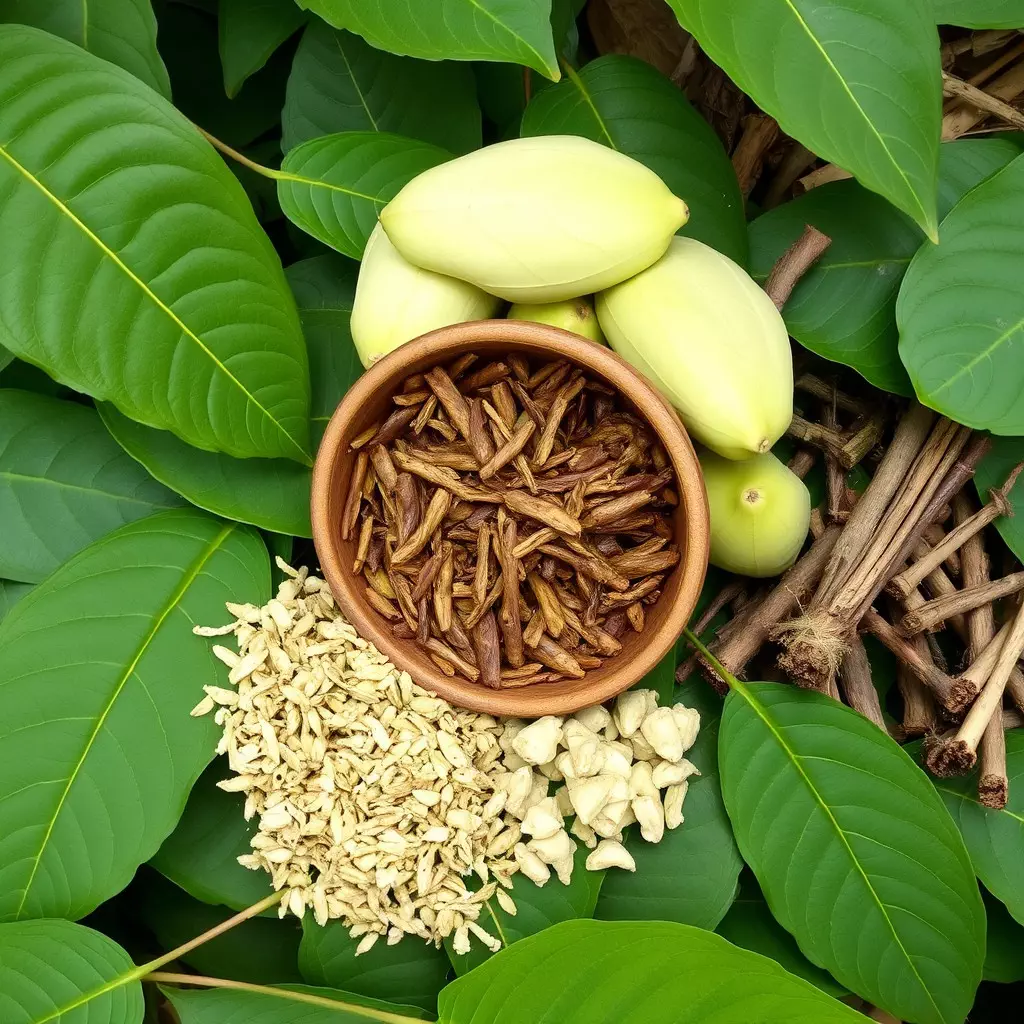Kratom, a plant-based substance from Southeast Asia, has emerged as a potential alternative for managing opioid withdrawal symptoms due to its interaction with brain opioid receptors. While some users and initial studies suggest it can alleviate symptoms like anxiety, muscle aches, insomnia, and cravings during opioid cessation, its efficacy and safety require further scientific scrutiny. Discount kratom, in particular, has gained attention for its affordability and potential to aid detoxification processes. However, it's important to approach this with caution due to the variability in effects among users, its legal status varying by region, and concerns about product purity and dosage consistency. Healthcare professionals should be consulted to evaluate the risks and benefits alongside evidence-based treatments. The use of discount kratom should be monitored closely due to its unregulated nature and potential for abuse. It's crucial to consider the long-term health implications and the possibility of adverse interactions with other substances when considering kratom as a part of an opioid withdrawal management strategy. A collaborative approach with healthcare providers is essential for personalized and safe treatment plans.
explore the potential of kratom as a mitigating agent for opioid withdrawal symptoms, delving into its role in detoxification. This article dissects the benefits and drawbacks of incorporating discount kratom into opioid withdrawal management, ensuring readers grasp the nuances of its use. We’ll guide you through safely integrating this alternative substance into your recovery process, offering a balanced perspective on its efficacy and safety considerations. Join us as we navigate the complex landscape of opioid detoxification and the role kratom might play in alleviating withdrawal discomfort.
- Understanding Kratom's Role in Mitigating Opioid Withdrawal Symptoms
- The Pros and Cons of Using Discount Kratom for Opioid Detoxification
- A Comprehensive Guide to Safely Integrating Kratom into Opioid Withdrawal Management
Understanding Kratom's Role in Mitigating Opioid Withdrawal Symptoms
Kratom, a plant from Southeast Asia, has garnered attention in discussions surrounding opioid withdrawal due to its potential alkaloid content that may interact with opioid receptors in the brain. Users and researchers alike are exploring kratom as a possible tool for managing the challenging symptoms associated with opioid cessation. The mitigation of withdrawal symptoms is a critical aspect of opioid addiction treatment, as it can significantly influence an individual’s recovery journey. While the scientific community continues to investigate the efficacy and safety of kratom for this purpose, anecdotal evidence and preliminary studies suggest that certain strains of kratom may offer relief from withdrawal symptoms such as anxiety, muscle aches, insomnia, and cravings. For those seeking alternative methods to cope with opioid withdrawal, discount kratom options are available online, providing more accessible treatment paths for some individuals. It is important for anyone considering kratom as part of their withdrawal management plan to approach it with caution, as the substance’s effects can vary widely among users and its legal status may differ by jurisdiction. Consultation with healthcare professionals is essential to ensure safe use and to explore all evidence-based treatment options available.
The Pros and Cons of Using Discount Kratom for Opioid Detoxification
Discount Kratom has emerged as a potential alternative for individuals seeking relief from opioid withdrawal symptoms during detoxification. Proponents argue that kratom, derived from the leaves of the Mitragyna speciosa tree, can alleviate the discomfort associated with withdrawal by mimicking opioid effects without creating additional dependency. It is often cited for its ability to reduce cravings and mitigate the intense symptoms experienced during detox, making it an accessible option for those who cannot afford more expensive treatments. The availability of discount kratom makes it a cost-effective solution for a broader demographic, facilitating wider access to support opioid cessation efforts.
However, the use of kratom is not without its caveats. While some users report positive outcomes, the efficacy and safety of kratom for opioid withdrawal are still under scientific scrutiny. The lack of regulation in the production and distribution of discount kratom raises concerns about purity and dosage consistency, potentially leading to adverse effects or unintended dependency. Moreover, because kratom is not a standardized medical treatment, its use should be approached with caution and ideally under the guidance of a healthcare professional. Users must consider the potential risks when opting for discount kratom, including the possibility of interactions with other substances and the long-term health implications that are still being studied.
A Comprehensive Guide to Safely Integrating Kratom into Opioid Withdrawal Management
When managing opioid withdrawal symptoms, integrating Kratom into a treatment plan can be a consideration for some individuals. It’s crucial to approach this integration with caution and guidance from a healthcare professional due to the potent effects of Kratom. This guide aims to provide insightful strategies on how to incorporate Kratom in a manner that supports the withdrawal process while minimizing potential risks.
Firstly, one must understand the nature of Kratom, a botanical substance derived from the leaves of Mitragyna speciosa. Available in various strains and forms, including capsules and powders, Kratom interacts with the opioid receptors in the brain, offering analgesic and anxiolytic effects that can be beneficial during withdrawal. However, it’s important to procure high-quality Kratom products such as those found at reputable sources like discount kratom vendors who provide pure and tested strains to ensure safety and efficacy. This step is pivotal in mitigating adverse effects and promoting a smoother transition during the detoxification phase.
Dosage is a critical factor when integrating Kratom into withdrawal management. It should be titrated carefully under medical supervision, starting with a low dose to assess individual tolerance and response. The timing of Kratom administration can also influence its effectiveness; it’s often recommended to take it consistently at the same intervals to maintain a steady state in the body. Additionally, monitoring for signs of dependency or adverse reactions is essential, as Kratom has the potential for abuse and dependence. Regular check-ins with healthcare providers will help in making informed adjustments to the treatment plan as needed.
By adhering to these guidelines and maintaining open communication with medical professionals, individuals can explore the potential benefits of Kratom while navigating the challenges of opioid withdrawal. It’s a journey that requires diligence, patience, and a comprehensive approach tailored to individual needs.
In conclusion, the potential role of kratom in mitigating opioid withdrawal symptoms presents a multifaceted topic with significant implications for public health. While products like discount kratom can offer an alternative to traditional detoxification methods and provide relief during the challenging process of withdrawal, it is crucial to approach their use with caution and informed guidance. The safest and most effective integration of kratom into opioid withdrawal management requires a comprehensive understanding of its effects, a careful selection of strains, and adherence to appropriate dosing protocols. As evidenced by the current body of research, while kratom holds promise for many, it is not without risks or regulatory oversight. Individuals seeking to use discount kratom as part of their recovery journey should consult with healthcare professionals to navigate this path safely and effectively, ensuring they receive the necessary support throughout the detoxification process.






